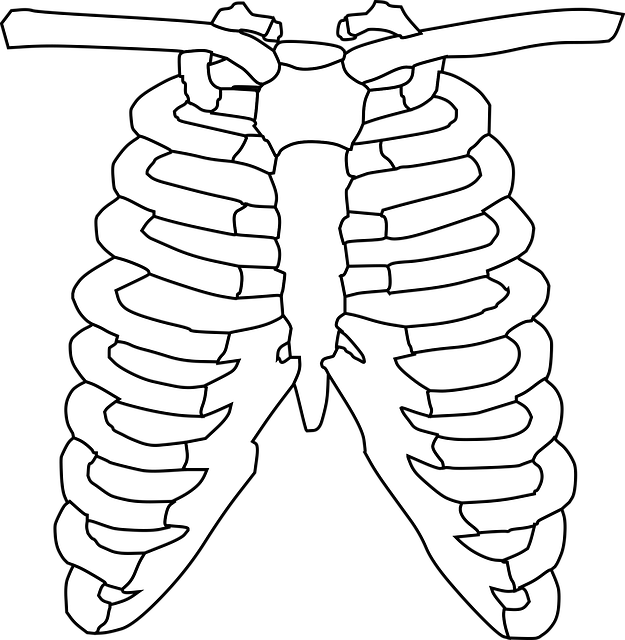CT contrast for X-ray is a powerful tool aiding in diagnosing swallowing disorders and gastrointestinal tract obstructions by enhancing organ visibility with iodinated dyes. It allows radiologists to track contrast agent movement through vital organs, revealing blockages, strictures, or foreign bodies with unprecedented clarity. This advanced visualization enables precise diagnoses, tailored treatment plans ranging from endoscopy to surgery, and effective progress monitoring over time.
Gastrointestinal (GI) contrast studies using CT contrast for X-ray offer advanced visualization for swallowing disorders and obstructions. These non-invasive procedures play a crucial role in diagnosing conditions affecting the esophagus, stomach, and intestines. Understanding CT contrast for X-ray enhances the benefits of GI studies, enabling radiologists to accurately identify blockages, assess swelling, and guide effective treatment plans. This article delves into these aspects, highlighting the significance of CT contrast in managing swallowing disorders.
Understanding Gastrointestinal Contrast Studies
Gastrointestinal contrast studies are a crucial diagnostic tool for evaluating swallowing disorders and obstructions. These studies involve the use of a special dye, or contrast agent, injected into the gastrointestinal tract via an IV or orally. The contrast agent shows up on medical imaging like X-rays or CT scans, highlighting abnormalities in the digestive system. By observing how the contrast moves through the esophagus, stomach, and intestines, healthcare providers can identify blockages, strictures, or other issues that may be causing swallowing difficulties.
CT contrast for X-ray plays a significant role here, offering detailed cross-sectional images of the gastrointestinal tract. This advanced visualization helps in making precise diagnoses and planning effective treatment strategies. For example, if a patient has trouble swallowing due to a potential tumor or narrowing in the esophagus, a gastrointestinal contrast study can provide the necessary insights for doctors to determine the best course of action.
CT Contrast for X-ray: How It Works
CT contrast for X-ray involves the use of a specialized dye injected into the patient’s bloodstream, which enhances the visibility of internal structures when an X-ray is taken. This dye, known as an iodinated contrast agent, is designed to settle in various organs and tissues, highlighting their shapes and sizes on the subsequent X-ray images. The process begins with the patient receiving the contrast material intravenously, ensuring it circulates throughout the body. As the contrast moves through the gastrointestinal tract, it provides a clearer view of any abnormalities or blockages that might be present.
When an X-ray is taken after the injection, the beams interact with the contrast agent, creating a distinct pattern on the film or digital sensor. This pattern allows radiologists to distinguish between dense structures like bones and softer tissues, including the gastrointestinal tract. The use of CT contrast for X-ray offers a more detailed and comprehensive view compared to standard X-rays, making it invaluable in diagnosing swallowing disorders and identifying obstructions within the digestive system.
Benefits of CT for Swallowing Disorders
Computed Tomography (CT) with contrast agents offers significant advantages in diagnosing swallowing disorders and obstructions compared to traditional X-rays. The primary benefit lies in its ability to provide detailed cross-sectional images of the gastrointestinal tract, enabling radiologists to identify issues that might be missed by standard frontal projections. By injecting a contrast material that shows up on CT scans, doctors can visualize the flow of contrast through the esophagus, stomach, and intestines, revealing structural abnormalities, strictures, or blockages with greater clarity.
This advanced visualization is particularly valuable for complex cases where symptoms suggest a swallowing disorder but conventional X-rays fail to confirm a specific etiology. With CT contrast, healthcare providers gain insights into the anatomy and physiology of the gastrointestinal system, facilitating more accurate diagnoses and tailored treatment plans. Moreover, it aids in monitoring treatment progress and assessing response to interventions over time.
Identifying and Treating Obstructions with GI Contrast
Identifying obstructions in the gastrointestinal tract is a complex task, but advanced imaging techniques like CT contrast for X-ray offer a clear view to guide treatment. When a patient presents with swallowing disorders or suspected blockages, healthcare providers can employ this technology to visualize the esophagus, stomach, and intestines. The use of contrasting agents during these scans enhances visibility, allowing doctors to pinpoint areas of narrowing, strictures, or complete obstructions caused by various factors such as tumors, hernias, or foreign bodies.
By accurately detecting the extent and location of the obstruction, physicians can tailor treatment plans accordingly. This may involve endoscopic procedures for minor blockages or surgical intervention for more severe cases. CT contrast for X-ray plays a pivotal role in this process by providing critical information that ensures effective and safe management of gastrointestinal obstructions.
Gastrointestinal (GI) contrast studies, particularly using CT contrast for X-ray, offer valuable insights into swallowing disorders and obstructions. By enhancing the visibility of the digestive tract, these studies enable accurate diagnosis and effective treatment planning. The benefits of CT are significant in identifying blockages, evaluating swallowing function, and guiding interventions. Incorporating CT contrast for X-ray into clinical practice enhances the management of GI conditions, ensuring better patient outcomes.
